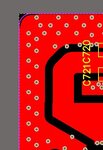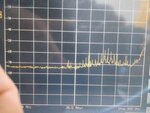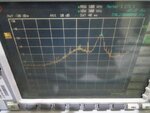tony_lth
Advanced Member level 5

ALL,
I designed a 8W GSM module, and the attached JPG is the 8W GSM TX trace.
The trace width is 2.7mm, and the around vias are ground.
The clearance between the GND and the trace is 1mm.
I doubt is it enough of the 1mm clearance?
If the 1mm is too narrow, would it cause any spurs in 500M-800MHz?
Best,
Tony Liu
- - - Updated - - -
PS: the DC is 12V.
I designed a 8W GSM module, and the attached JPG is the 8W GSM TX trace.
The trace width is 2.7mm, and the around vias are ground.
The clearance between the GND and the trace is 1mm.
I doubt is it enough of the 1mm clearance?
If the 1mm is too narrow, would it cause any spurs in 500M-800MHz?
Best,
Tony Liu
- - - Updated - - -
PS: the DC is 12V.





